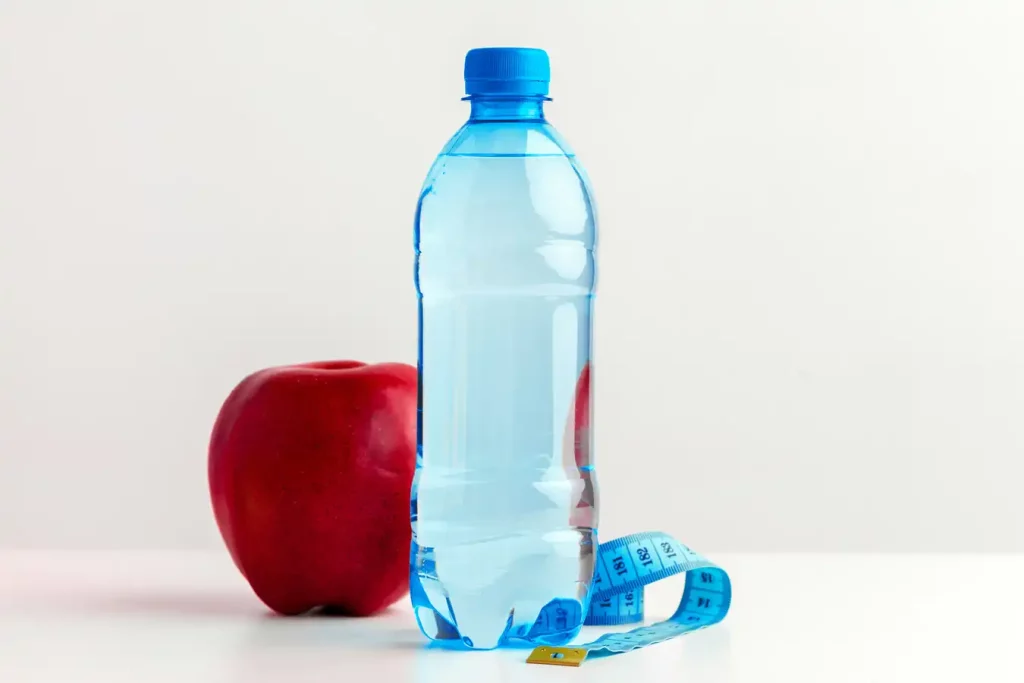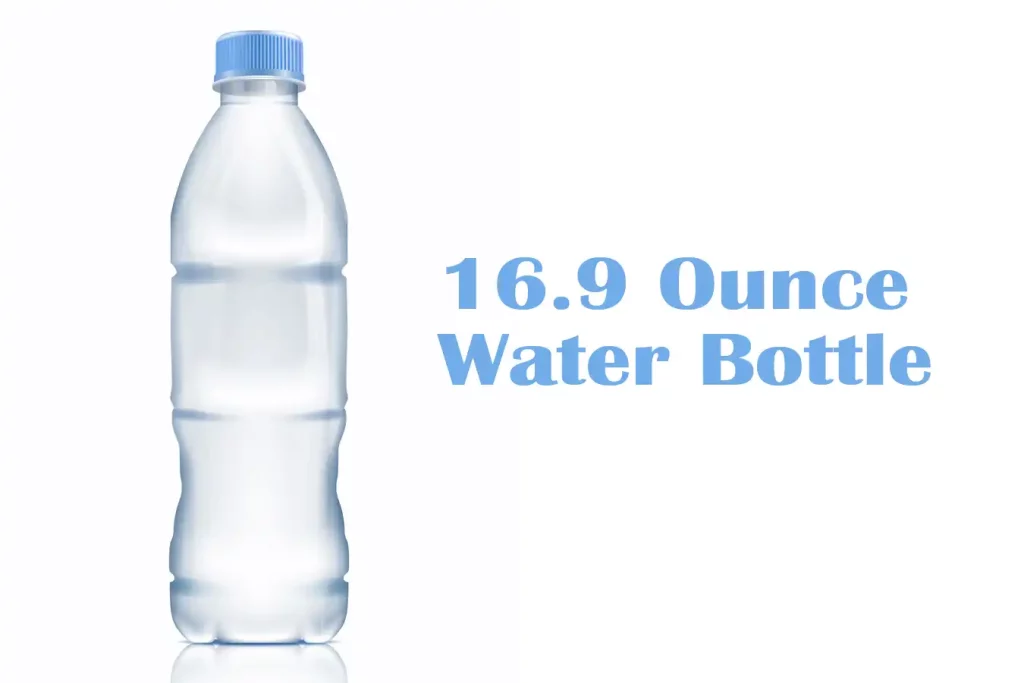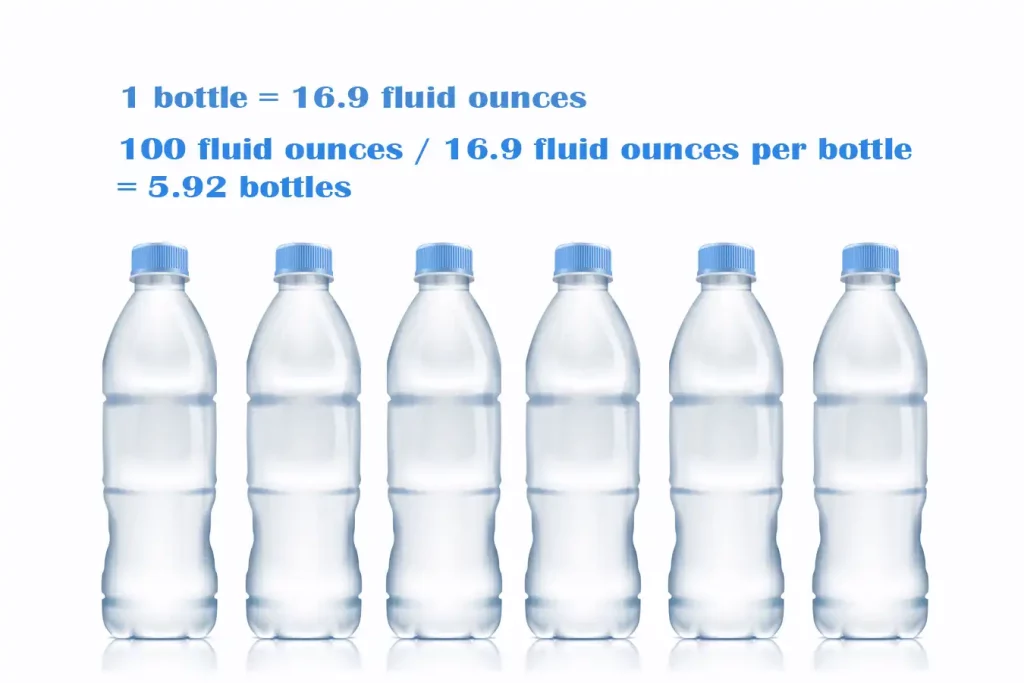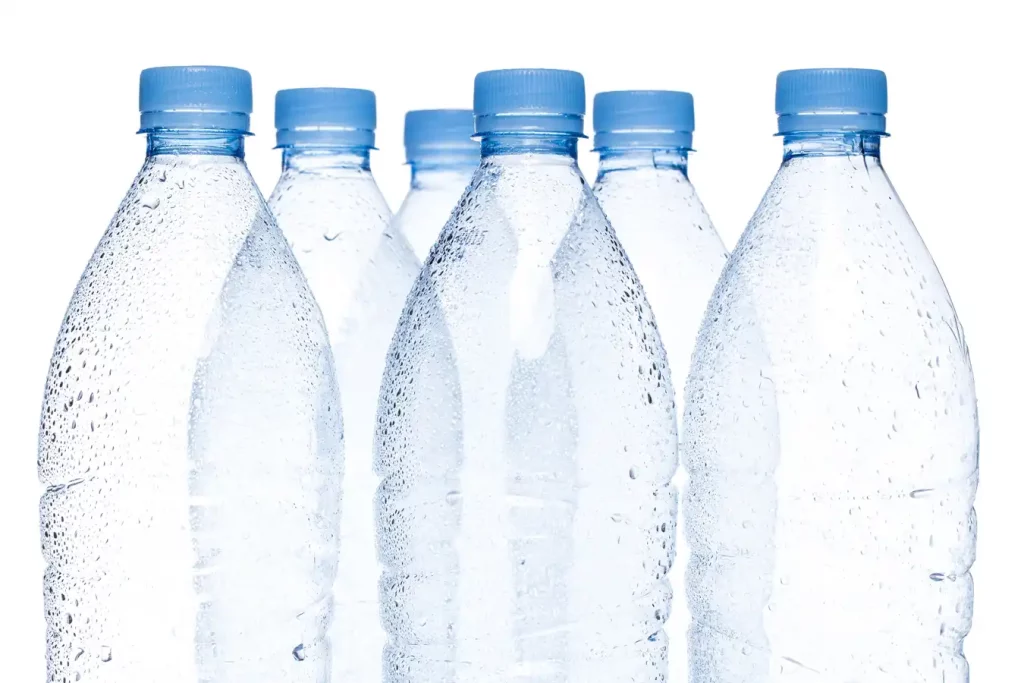Ever wondered “how many bottles of water is 100 oz”?
That’s the intriguing question we’ll unravel in this article.
We aim to simplify the math, transforming it into easily digestible facts.
Imagine never again having to second guess your hydration during camping trips, workouts, or even typical work days.
Prepare to gain insights that will alter how you plan your daily water consumption.
So sit back, relax, and let’s dive into this surprising investigation of quantity, measurements, and the world of bottled water.
Understanding Basic Measurement Units
Before we can fully tackle your question, we need to get some fundamentals out of the way. Don’t worry; we’re not going back to high school physics class, but we will need to discuss the basics of measurement units, specifically ounces and fluid ounces. By understanding these concepts, you’ll be able to easily calculate your water intake, no matter the size or type of bottle you use!
Understanding Ounces and Fluid Ounces
Measurement units can sometimes be confusing. For example, when we talk about “ounces” in the context of water or any other fluid, we are referring to “fluid ounces.” This is a unit of volume used in the U.S. customary and British imperial systems. It’s different from the “ounce” that measures weight, although they share the same name.
To put it simply, an ounce (oz) measures weight, while a fluid ounce (fl oz) measures volume. But you’re interested in fluid ounces, so let’s focus on that. When we say a bottle contains, let’s say, 16 fluid ounces, we’re talking about the volume or space the water takes up in the bottle.
Converting Fluid Ounces to Liters
Now that we have an understanding of fluid ounces, let’s talk about how we can convert this to a more globally recognized unit of measurement – the liter.
Here’s the formula: 1 fluid ounce is approximately 0.0296 liters. So, if we want to find out how many liters 100 fluid ounces is, we multiply 100 by 0.0296. This gives us approximately 2.96 liters.
Importance of Hydration
We’ve done some math and conversions, but let’s not forget the real-world importance of all this. Why does it matter to know how many bottles of water make 100 ounces? Well, it’s all about hydration.
The human body is approximately 60% water, and staying hydrated is vital to maintaining our health. Hydration aids in digestion, keeps our skin healthy, helps remove waste from the body, and even boosts our mood.
The common recommendation is to drink at least 64 fluid ounces of water a day, but this can vary depending on many factors, including your physical activity levels, climate, and overall health. So, knowing that 100 fluid ounces is roughly equal to three standard 33.8 fluid ounce (or one liter) bottles can help ensure you’re well on your way to meeting your daily hydration goals.
Understanding Water Bottle Sizes
Navigating the world of water bottle sizes can be a bit like Alice in Wonderland’s journey – full of surprises and unexpected twists. Knowing the different bottle sizes not only helps in understanding your daily water intake but also can guide you in making environmentally friendly choices. Let’s take a look at some standard water bottle sizes, and see how they measure up.
Standard Water Bottle Sizes in the US
In the United States, water bottles come in various sizes, with some of the most common being 8, 12, 16.9 (that’s right, not a round number!), and 20 fluid ounces. The 16.9 fluid ounce bottle is one of the most prevalent, equaling 500 milliliters, a nice round number in the metric system.

Larger bottles include 1-liter (33.8 fluid ounces) and 1.5-liter bottles (50.7 fluid ounces), which are popular among those looking to reduce waste or increase their water intake without needing to refill so often.
Variations in Water Bottle Sizes Globally
Water bottle sizes vary considerably across the globe due to different measurement systems and consumer habits. For example, in Europe, it’s more common to find water bottles sized in metric units, with 500 milliliters (equivalent to 16.9 fluid ounces) and 1-liter bottles being widespread.
In Asia, you’ll often find 600 milliliter (20.3 fluid ounces) bottles, and in Australia, popular sizes include 350 milliliters (11.8 fluid ounces) and 600 milliliters. However, similar to the US, larger sizes like 1.5 liters or even 2 liters are available for those who prefer to reduce plastic waste or enjoy the convenience of fewer refills.
Detailed Table: Standard Water Bottle Sizes
| Region | Common Sizes (Fluid Ounces) | Common Sizes (Milliliters/Liters) |
| United States | 8, 12, 16.9, 20, 33.8, 50.7 | 236.6, 354.9, 500, 591.5, 1, 1.5 |
| Europe | 16.9, 33.8, 50.7 | 500, 1, 1.5 |
| Asia | 20.3, 33.8 | 600, 1 |
| Australia | 11.8, 20.3, 33.8, 50.7 | 350, 600, 1, 1.5 |
Now that you’re familiar with the various water bottle sizes, you’ll have an easier time calculating your daily water intake. No matter the size of your bottle, remember the goal is to stay hydrated!
Step-by-step Calculation: How Many Bottles of Water Is 100 Oz
Knowing how many bottles of water make up 100 fluid ounces can be incredibly helpful, especially if you’re trying to meet specific hydration goals or planning for an event. Let’s break down this calculation into manageable steps.
Assumption: Size of Water Bottle
For this calculation, we need to choose a standard size for our water bottle. Let’s assume that we’re using a standard American water bottle size of 16.9 fluid ounces (500 ml), which is a very common size found in most stores.
Step 1: Identify the Size of Your Water Bottle
The first step in this process is to identify the size of your water bottle. While we’re assuming a 16.9-ounce bottle for this calculation, remember that your bottle may be different. Look for a number followed by “fl oz” or “ml” (if it’s in metric units, you might want to convert to ounces for this calculation).

Step 2: Convert Ounces to Bottles
Next, we need to figure out how many ounces are in each bottle. If we’re using our 16.9-ounce bottle as an example, then the conversion is simple – each bottle contains 16.9 fluid ounces.
Step 3: Calculate the Number of Bottles for 100 oz
Finally, we divide 100 (the total ounces we’re aiming for) by the number of ounces per bottle. In this case, 100 divided by 16.9 gives us approximately 5.92. This means you would need nearly 6 bottles of the 16.9-ounce size to reach 100 fluid ounces.
Calculation Summary Table
| Step | Action | Example |
| 1 | Identify the size of your water bottle | 16.9 fluid ounces |
| 2 | Convert ounces to bottles | 1 bottle = 16.9 fluid ounces |
| 3 | Calculate the number of bottles for 100 oz | 100 fluid ounces / 16.9 fluid ounces per bottle = 5.92 bottles |
There you have it! Now, no matter the size of your water bottle, you have the knowledge to calculate how many you’ll need to reach 100 fluid ounces.

So, how many bottles of water is 100 oz? The answer is: Using US standard 16.9-ounce bottles, approximately 6 bottles of water make up 100 ounces.
Practical Tips for Measuring Water Intake
Understanding how much water you’re consuming daily is an important part of maintaining a healthy lifestyle. But keeping an accurate count can be a challenge. Here are some practical tips to make the task easier and more effective.
Tracking Your Daily Water Intake
One of the most straightforward ways to monitor your water intake is by tracking how many bottles of water you consume. If you’re using the standard 16.9-ounce bottle, you already know you need roughly six bottles to hit 100 ounces. Carrying a bottle with you and keeping count can be an easy method to ensure you’re getting enough H2O.
Using Apps to Monitor Hydration
If you’re someone who is tech-savvy and prefers digital solutions, there are plenty of hydration apps available for smartphones. These apps track your water intake, remind you to drink water at regular intervals, and some even consider factors like body weight, climate, and physical activity level to suggest your daily water intake.
Water Intake and Physical Activity
Remember, if you’re an active individual or live in a hotter climate, your water needs may be higher than the average person. Consider increasing your intake to compensate for the water loss through sweat.
Importance of Accurate Water Measurement
Proper hydration is not just about quenching thirst. It plays a pivotal role in maintaining your body’s overall health and well-being. Conversely, both inadequate hydration and overhydration can have significant health consequences.
Health Benefits of Adequate Hydration
From aiding digestion and maintaining skin health to regulating body temperature and promoting cardiovascular health, adequate hydration is essential. It helps transport nutrients to the cells and remove waste from the body.
Risks of Overhydration
However, drinking too much water can also pose problems. Overhydration can lead to a condition called hyponatremia, which happens when the balance of electrolytes in your body is disrupted by a large intake of water. Symptoms can be mild like nausea or headache but in extreme cases, it can be life-threatening.
FAQs about How Many Bottles of Water Make Up 100 Ounces
How many 16.9 bottles of water is 100 oz?
How many water bottles equal 100 ounces?
How much is 100 oz in water?
How much is 100 oz of water a day?
Is 100 oz a lot of water?
Is 100 oz of water a gallon?
What is 100 ounces of water equal to?
How many cups is 100 oz of water?
Last Words
Understanding how many bottles of water is 100 ounces is not just a math problem. It’s about ensuring proper hydration, a key element of a healthy lifestyle. Now, equipped with this knowledge, you can better plan your daily water intake.
Remember, the 100-ounce mark is just a general guideline. Each person’s water requirements can differ based on various factors. So, adjust accordingly and listen to your body’s needs. Stay hydrated, stay healthy!
Will you start tracking your water intake now? The journey towards proper hydration begins with a single sip!


